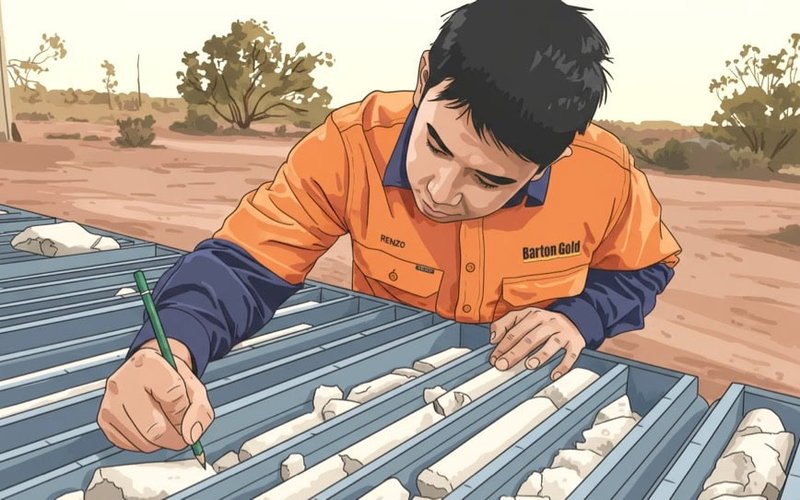Upgrade drilling at the starter pits of Barton Gold’s (ASX: BGD) (OTCQB: BGDFF) Tunkillia project in South Australia is advancing ahead of schedule and under budget, with approximately 66% of the planned 18,000 metre program now complete.
The reverse circulation campaign is aiming to convert the Stage 1 and Stage 2 open-pit areas to measured and indicated resources, while reinforcing modelling confidence and supporting expedited project financing discussions.
Previous drilling in the area yielded best intercepts of 10 metres at 15.7 grams per tonne gold from 54m, 9m at 6.57g/t gold from 72m, and 17m at 5.90g/t gold from 79m.
Initial Assays Imminent
Kalgoorlie-based contractor Raglan Drilling has been working onsite for 37 days, completing 12,000m to date for an average of approximately 325m per day, with an initial batch of assays from the central and highest-value Stage 1 mineralisation expected within the coming weeks.
Assuming revenues based on a gold price of $5,000 per ounce, Barton has modelled the open-pit areas at Tunkillia to yield up to 365,000 ounces gold and $1.3 billion operating profit during the first 2.5 years of operation.
The company expects the starter pit cash flow to repay development costs more than twice over during the first 12 months, and more than three times over during the first two years.
Proceeding to Plan
“We are pleased to confirm that the first phase of Tunkillia upgrade drilling is progressing well, ahead of schedule and under budget,” managing director Alex Scanlon said.
“Prior drilling in the starter pits area has typically returned the project’s highest grades, and our modelling indicates these pits can deliver a payback period of less than 12 months in operations, offering us a very attractive credit profile.”
Barton has planned a second stage reverse circulation campaign at Tunkillia for March 2026 to target conversion of the remaining resource to the indicated category, as identified in the project’s optimised scoping study released in May.
Concurrent diamond drilling will infill and expand the geotechnical and metallurgical databases to support further pit design optimisation and feasibility studies.
